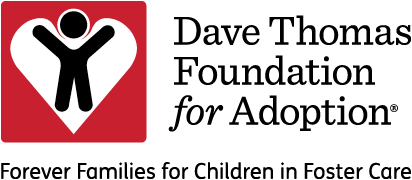
Ensuring every child has a permanent, stable living situation is a cornerstone of child welfare. Ideally, this takes the form of reunification with a child’s family of origin. But in cases where a court deems that is not a safe option, permanency may also take the form of guardianship or adoption.
Over the years, the federal government has enacted several laws intended to advocate for the needs of every child in foster care. Following are highlights of laws, which may not be familiar to everyone in a child’s village:
1: Indian Child Welfare Act (ICWA) — 1978
Aiming to preserve Native American families and tribal culture, ICWA establishes that tribal courts have exclusive jurisdiction over child custody cases involving Indian children. The law’s purpose is to protect the best interest of Indian children. It provides the minimum federal standards for states to promote the stability and security of Indian tribes and families, while ensuring that children are placed in homes that reflect Indian culture. Tribes also must be notified of proceedings and given the opportunity to intervene, helping prevent family separation.
2: Multi-Ethnic Placement Act (MEPA) — 1996
MEPA, enacted in 1994 and amended in 1996, aims to eliminate racial and ethnic barriers in foster care and adoption processes in the United States. It prohibits agencies from delaying or denying child placements based on race, color or national origin by mandating a diverse pool of placement options during recruitment. States must comply with MEPA to receive federal funding, and ongoing efforts are made to monitor and improve its implementation.
3: Adoption and Safe Families Act (ASFA) — 1997
Enacted to promote the safety, permanency and well-being of children in foster care, ASFA introduced measures to expedite the permanent placement of children. This law requires that states initiate termination of parental rights for children who have been in foster care for 15 out of the last 22 months, with certain exceptions. Despite it’s intentions, ASFA has faced criticism for sometimes prioritizing adoption over reunification by placing a timeline on reunification, undermining family of origin preservation efforts.
4: Fostering Connections to Success and Increasing Adoptions Act — 2008
Seeing the value in connecting children with kin, Fostering Connections Act aims to improve outcomes for children in care by connecting them with relatives, mandating that a custodial agency needs to identify and notify all adult relatives of a child within 30 days of their removal from home. The law also allows states the option to provide kinship guardian assistance payments for youth for whom the most appropriate legal permanency option is legal guardianship (rather than reunification or adoption).
5: Preventing Sex Trafficking and Strengthening Families Act — 2014
Addressing the vulnerabilities of children in foster care to sex trafficking, this law also focuses on the importance of permanency. It limits youth under age 16 from being placed in another planned permanent living arrangement (APPLA), increasing the likelihood of aging out of foster care without legal permanency. It also requires increased documentation for why this option is appropriate for youth ages 16 and older. Additionally, it mandates the inclusion of youth voice in case planning for young people ages 14 and older, ensuring that their preferences and interests are considered.
6: Family First Prevention Services Act — 2018
The creation of the Family First Act brought a significant shift in child welfare policy in prioritizing the prevention of children being placed in foster care. This law also focuses on keeping families of origin together by addressing the root concerns with in-home services. These include mental health treatment, substance misuse prevention and in-home parenting skills training, all supported by additional federal funding. This law also limits federal reimbursement of state placements of youth in congregate care group homes that are not qualified residential treatment programs, hopefully leading states to focus on getting these youth into permanent placements.
Federal laws like these and collaborative partnerships are critical to ensure that no child leaves the system without the safe, loving and permanent family that is their birthright.
The Foundation is committed to being a part of the solution through education, advocacy and programs, such as Wendy’s Wonderful Kids®, which serves a focus population of older youth, children with special needs and siblings who have been waiting the longest. A rigorous, five-year national evaluation revealed that a child referred to the Wendy’s Wonderful Kids program is up to three times more likely to be adopted.
Hear insights from professionals and access more resources to support your work in serving youth in foster care on the Foundation’s For Professionals page.
